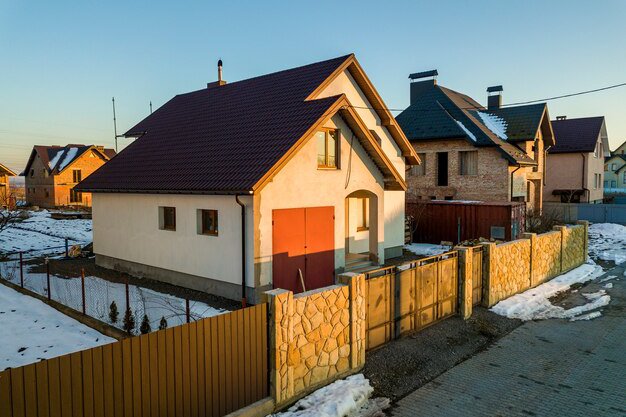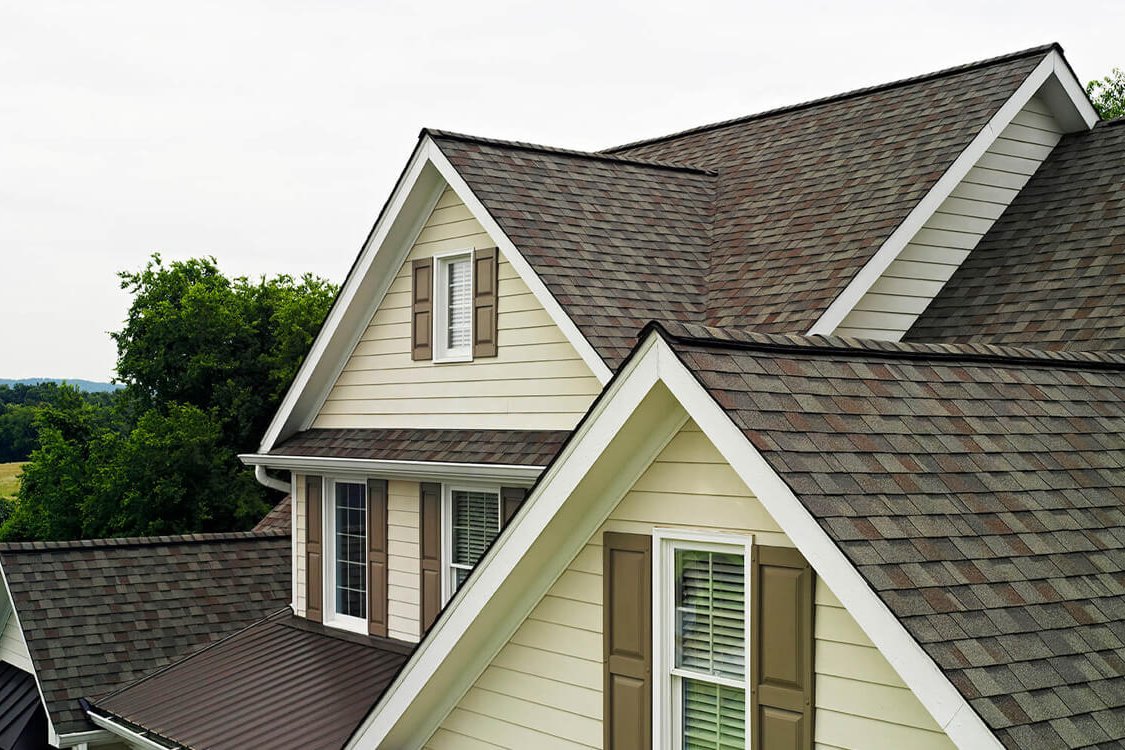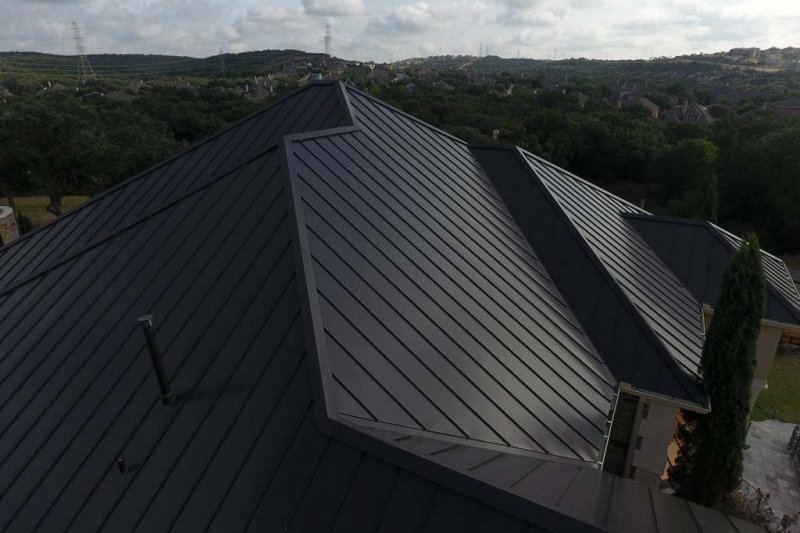Seamless Gutters for Wilsonville, Oregon Homes: Benefits and Guide
Gutters might not be the most glamorous part of a home, but they play an absolutely critical role in protecting its structure. They channel rainwater away from the roof, walls, and foundation, preventing costly damage like rot, mold, and erosion. For homeowners in Wilsonville, Oregon, where seasonal rainfall is a significant factor, having an effective gutter system is non-negotiable. While traditional sectional gutters have been common for years, seamless gutters have emerged as a superior alternative, offering enhanced performance, durability, and aesthetic appeal. This guide explores what seamless gutters are, their numerous benefits, the installation process, material options, and how they compare to their sectional counterparts, helping you understand why they might be the ideal choice for your Wilsonville home.
What are Seamless Gutters?
Unlike traditional gutters that are assembled from pre-cut sections joined together, seamless gutters are custom-made on-site to fit the exact dimensions of your home's roofline. A specialized machine is brought to the property, where it takes flat coils of metal and runs them through rollers, extruding a continuous piece of gutter shaped to the desired profile (most commonly K-style or half-round).
The key distinction lies in the absence of seams along the length of the gutter run. Seams are only present at the corners and where downspouts connect. This fundamental difference is the source of most of the advantages seamless gutters offer.
Imagine a long pipe versus a series of short pipes connected with couplings. The long pipe (seamless) has far fewer potential points of failure than the connected shorter pipes (sectional). This simple concept translates directly into practical benefits for your home's water management system.
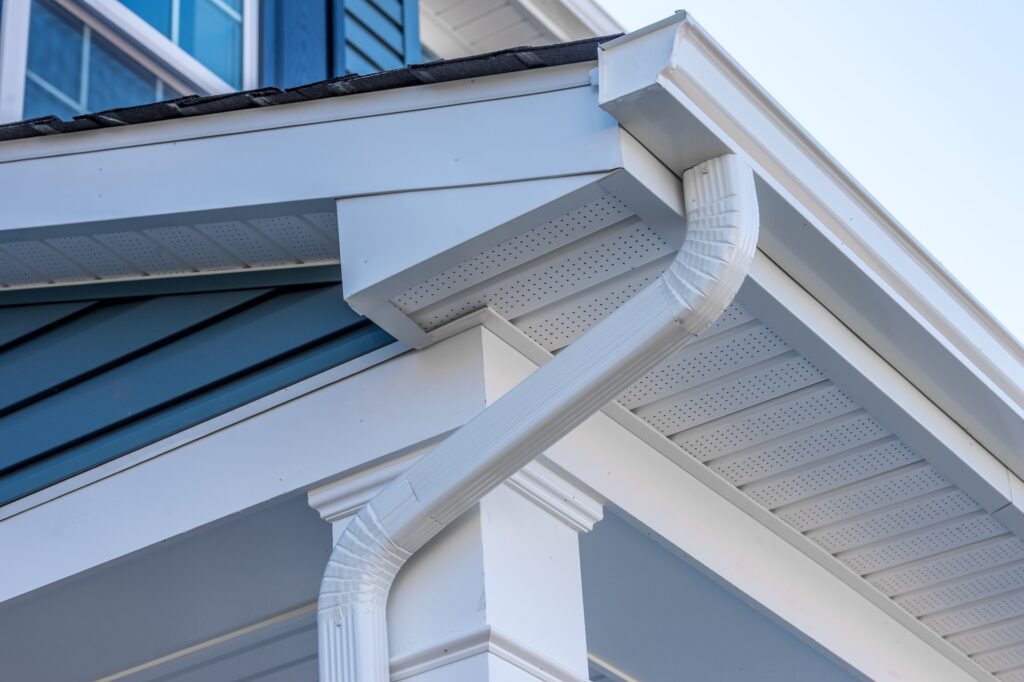
The Seamless Gutter Installation Process
Installing seamless gutters is a process that requires specialized equipment and expertise. It typically involves several steps performed by trained professionals:
- Measurement and Assessment: The contractor first takes precise measurements of your home's roofline, noting the length of each section, the location of corners, and the planned placement of downspouts. They also assess the roof pitch, fascia condition, and overall drainage needs to determine the appropriate gutter size (typically 5-inch or 6-inch) and layout. This initial assessment is crucial for ensuring the custom gutters are fabricated correctly and will function optimally.
- On-Site Fabrication: Using the measurements taken, the contractor brings their portable seamless gutter machine to your property. Coils of the chosen gutter material (e.g., aluminum, copper) are fed into the machine, which then forms and cuts the continuous gutter lengths right there at your home. This step ensures a perfect, custom fit for each section of your roofline.
- Fascia Preparation and Hanger Installation: Before attaching the gutters, the fascia board (the vertical board along the eaves) is inspected and prepared. Damaged fascia must be repaired or replaced to provide a solid surface for mounting the gutters. Various types of hangers (brackets that attach the gutter to the fascia or roof deck) are then installed at regular intervals along the fascia. Common types include hidden hangers (screwed into the fascia from inside the gutter, providing a clean look) and external hangers (straps or brackets visible from the outside). Proper hanger spacing is essential for supporting the weight of the gutter, especially when filled with water or debris.
- Attaching the Gutters: The newly fabricated seamless gutter sections are carefully lifted and placed onto the installed hangers. They are then securely fastened to the hangers, ensuring the gutter has the correct pitch or slope towards the downspouts. A slight slope (typically 1/16 to 1/8 inch per foot) is necessary to ensure water flows efficiently towards the downspouts and doesn't pool in the gutter.
- Adding End Caps, Corners, and Downspouts: Once the long runs are in place, the few necessary seams are created at the corners using pre-fabricated corner pieces, and end caps are installed at the end of each run. These connections are sealed with a high-quality sealant to prevent leaks. Downspout outlets are cut into the bottom of the gutter, and the downspouts are attached. Downspouts are connected in sections and fastened to the wall, guiding water safely away from the foundation. The number and placement of downspouts are determined during the initial assessment to handle the expected volume of water.
- Testing and Final Adjustments: After installation, the system is tested, often by running water through the gutters or waiting for rainfall, to ensure proper flow and check for any leaks at the seams (corners and downspout connections). Any necessary adjustments to the slope or sealing are made to guarantee the system is functioning correctly.
This process, from initial measurement to final testing, highlights the precision and skill involved in seamless gutter installation. It's not a DIY project for most homeowners and requires professional tools and knowledge.
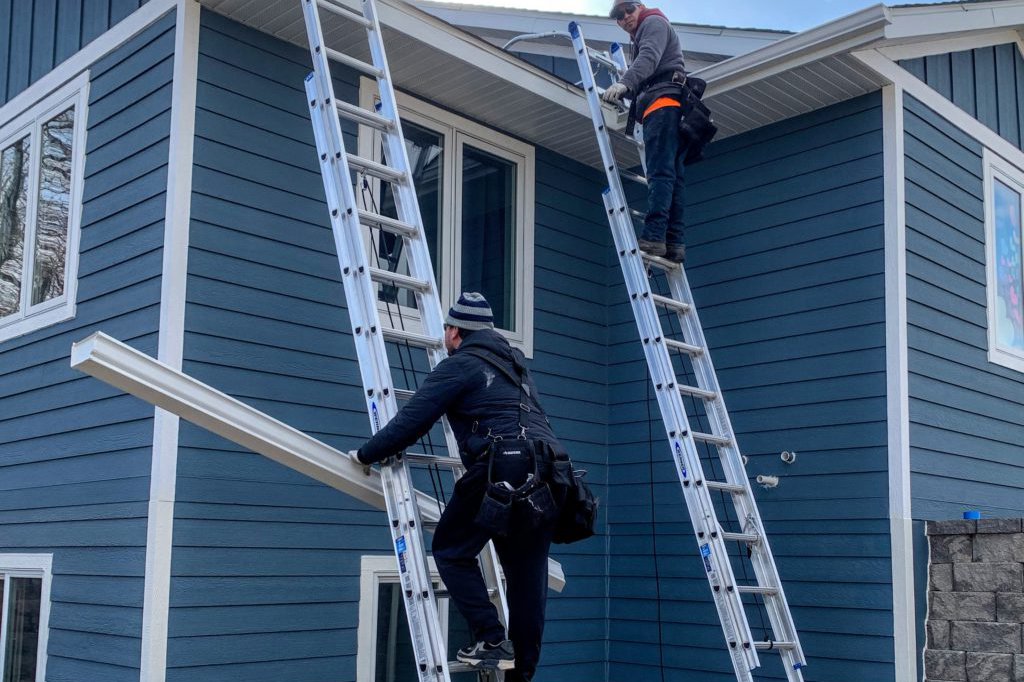
Key Benefits of Seamless Gutters
Seamless gutters offer a range of significant advantages over their sectional counterparts, making them a worthwhile investment for many homes:
Reduced Risk of Leaks
This is arguably the most significant benefit. Traditional sectional gutters have seams every 10 feet or so, where sections are joined together. These seams are typically sealed, but over time, the sealant can degrade, crack, or pull away due to temperature fluctuations, debris buildup, and general wear and tear. Each seam represents a potential weak point and a place where water can leak out, dripping onto the fascia, siding, or pooling near the foundation. Seamless gutters, with seams only at corners and downspout connections, dramatically reduce the number of these potential leak points. Fewer leaks mean less risk of water damage to your home's exterior, foundation, and landscaping.
Enhanced Aesthetics and Curb Appeal
Seamless gutters provide a much cleaner, smoother, and more finished look compared to sectional gutters. The continuous run of material creates a sleek line along the eaves, complementing the architecture of your home rather than looking like a pieced-together afterthought. They are available in a wide variety of colors to match or contrast with your trim and siding, allowing for better integration into your home's overall design. This improved appearance can significantly boost your home's curb appeal.
Lower Maintenance Requirements
While no gutter system is entirely maintenance-free, seamless gutters generally require less frequent cleaning and repair than sectional ones. The smooth, continuous interior surface provides fewer places for leaves, twigs, and other debris to catch and accumulate. Debris is more likely to flow freely towards the downspouts. Fewer seams also mean fewer spots where debris can snag or clogs can begin to form. This translates to less time spent cleaning and a reduced risk of clogs that can lead to overflow and water damage.
Increased Durability and Longevity
With fewer seams, seamless gutters are inherently stronger than sectional systems. Seams are not only leak points but also structural weak points. By eliminating most seams, seamless gutters are more resistant to bending, warping, and separating, especially under the weight of water, ice, or heavy debris. This increased structural integrity means they are likely to last longer than sectional gutters, providing better long-term value.
Custom Fit for Your Home
Because they are fabricated on-site, seamless gutters are custom-sized to fit the exact dimensions of your home. This ensures a perfect fit along the eaves, eliminating the need for awkward cuts or excessive joints that can detract from appearance and performance. A custom fit means the system is optimized for your specific roofline and drainage needs.
Improved Water Management Efficiency
The smooth interior surface and proper slope of a well-installed seamless gutter system allow water to flow quickly and efficiently away from the roof. There are no ridges or offsets at seams to impede flow. This efficient water channeling is vital during heavy rain, preventing water from backing up onto the roof or overflowing the gutters, which can lead to fascia damage, soffit issues, and foundation problems.
Protection Against Foundation Damage
Proper water diversion is essential for protecting your home's foundation. Gutters that leak or overflow can cause water to pool around the foundation, leading to soil erosion, hydrostatic pressure against foundation walls, and potential cracking or structural issues. Seamless gutters, with their reduced leak risk and efficient flow, are better equipped to channel water safely away, providing superior protection for your home's most critical structural element.
Materials Used for Seamless Gutters
Seamless gutters can be fabricated from several different materials, each with its own characteristics, appearance, durability, and cost. The most common options include:
Aluminum
Aluminum is the most popular choice for seamless gutters due to its balance of cost, durability, and versatility. It is lightweight, rust-resistant, and available in a very wide array of factory-baked enamel colors that are highly durable and require little painting. Aluminum gutters are relatively easy for professionals to work with and form on-site. They are suitable for most residential applications and climates. The thickness, or gauge, of the aluminum can vary, with thicker gauges offering greater durability and resistance to denting.
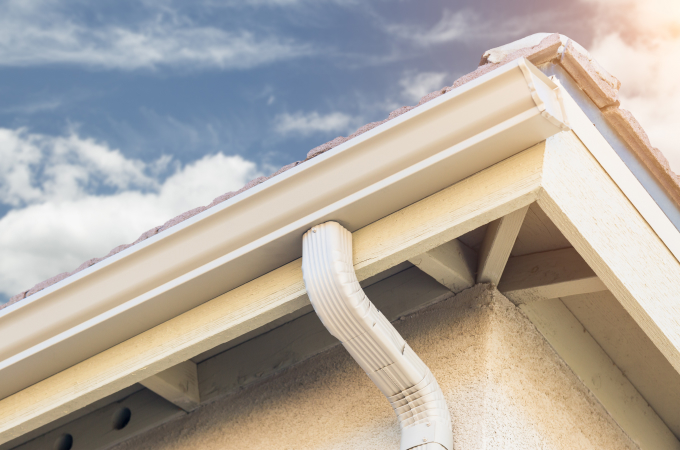
Copper
Copper seamless gutters are a premium option known for their exceptional durability, longevity, and unique aesthetic appeal. Copper does not rust but instead develops a beautiful green or brown patina over time as it oxidizes. This patina acts as a protective layer, making copper gutters incredibly long-lasting, often exceeding 50 years. While significantly more expensive than aluminum, copper gutters offer a distinct, high-end look that can enhance the architectural style of certain homes. They require no painting or finishing.
Steel
Seamless gutters can also be made from steel, typically galvanized steel (coated with zinc for rust resistance) or stainless steel. Steel gutters are very strong and durable, capable of withstanding heavy loads like ice and snow. However, galvanized steel is susceptible to rust if the protective coating is scratched or damaged, particularly near seams or fasteners. Stainless steel is highly corrosion-resistant and durable but is also a more expensive option, though generally less costly than copper. Steel gutters are heavier than aluminum and require more effort to install.
Zinc
Similar to copper, zinc seamless gutters are a high-performance, premium material that develops a protective patina over time, changing from a dull gray to a bluish-gray. Zinc is highly durable, corrosion-resistant, and offers a lifespan comparable to or even exceeding copper. It is also a significant investment, typically priced similarly to or higher than copper. Zinc gutters offer a sophisticated, European look and are an excellent choice for homeowners seeking maximum longevity and a unique aesthetic.
The choice of material will impact the initial cost, the required maintenance, the lifespan of the system, and the overall look of your home. Your climate and aesthetic preferences should also factor into your decision.
Seamless vs. Sectional Gutters: A Detailed Comparison
Understanding the key differences between seamless and sectional gutters can help you make an informed decision. Here's a comparison across several important factors:
| Feature | Seamless Gutters | Sectional Gutters |
|---|---|---|
| Construction | Custom-made on-site in continuous lengths | Assembled from pre-cut sections (typically 10 ft) |
| Seams | Only at corners and downspout outlets (minimal) | Every 10 feet where sections join (numerous) |
| Leak Risk | Significantly lower due to fewer seams | Higher due to numerous seams that can fail over time |
| Installation | Requires professional equipment and expertise | Can be a DIY project, but professional installation is recommended |
| Aesthetics | Clean, smooth, continuous line; custom colors | Pieced-together look; visible seams and fasteners |
| Maintenance | Lower risk of clogs, easier cleaning due to fewer snags | Higher risk of clogs at seams, requires more frequent cleaning |
| Durability | More durable and resistant to bending/separation | Seams are weak points, more susceptible to damage |
| Lifespan | Generally longer lifespan | Shorter lifespan due to seam degradation |
| Cost | Higher initial cost (materials and labor) | Lower initial cost (materials and easier installation) |
| Customization | Custom fit to exact roofline dimensions | Standard sections, less precise fit |
While sectional gutters have a lower upfront cost and can be installed by a handy homeowner, the long-term benefits of seamless gutters—reduced maintenance, lower leak risk, increased durability, and enhanced aesthetics—often make them a more cost-effective and valuable investment over the life of the home. The reduced risk of costly water damage alone can justify the higher initial expense.
Factors Influencing Seamless Gutter Cost
The cost of installing seamless gutters varies depending on several factors. It's important to understand these variables to get an accurate estimate for your specific project.
- Material Choice: As discussed, the material significantly impacts cost. Aluminum is the most budget-friendly, followed by galvanized steel, then stainless steel, and finally copper or zinc at the higher end.
- Linear Footage: The total length of gutters needed is a primary cost driver. Longer rooflines require more material and fabrication time.
- Home Size and Roofline Complexity: Larger homes naturally require more gutters. Complex rooflines with many corners, angles, and different sections increase the complexity of the job, requiring more cuts, corner pieces, and specialized work, which adds to the labor cost.
- Gutter Size: While 5-inch gutters are standard for many homes, 6-inch gutters (often called "oversized") are recommended for larger roofs, steeper pitches, or areas with heavy rainfall to handle the increased water volume. Larger gutters require more material and may cost slightly more.
- Number of Downspouts: More downspouts are needed for longer runs or larger roofs to ensure efficient drainage. Each downspout adds to the material and installation cost.
- Accessibility: Homes with difficult-to-access rooflines, multiple stories requiring tall ladders or scaffolding, or challenging landscaping can increase labor time and therefore cost.
- Removal and Disposal of Old Gutters: If you are replacing an existing system, the cost of safely removing and disposing of the old gutters will be included in the estimate.
- Additional Features: Costs can also increase if you opt for features like gutter guards (to reduce clogging), splash blocks, or underground drainage extensions.
Because of these variables, getting a personalized estimate is essential before planning your budget. While this article focuses on seamless gutters, planning any exterior home project often starts with understanding the scope and potential costs of related systems like your roof.
While this article focuses on seamless gutters, planning any exterior home project often starts with understanding the scope and potential costs of related systems like your roof.
Get a Free Instant Roof Estimate
This instant estimate tool can provide a starting point for considering overall exterior projects handled by qualified professionals.
Maintaining Your Seamless Gutters
While seamless gutters require less maintenance than sectional gutters, they are not maintenance-free. Regular cleaning and inspection are still necessary to ensure they function correctly and last as long as possible.
The primary maintenance task is cleaning. Even with fewer seams, debris like leaves, pine needles, twigs, and granules from asphalt shingles can still accumulate, especially in corners or if downspouts become blocked. Clogged gutters can lead to overflow, fascia damage, and water backing up under the roof eaves. Cleaning should typically be done at least twice a year, often in late spring after tree pollen and debris fall and again in late fall after leaves have dropped. More frequent cleaning may be needed if your home is surrounded by trees.
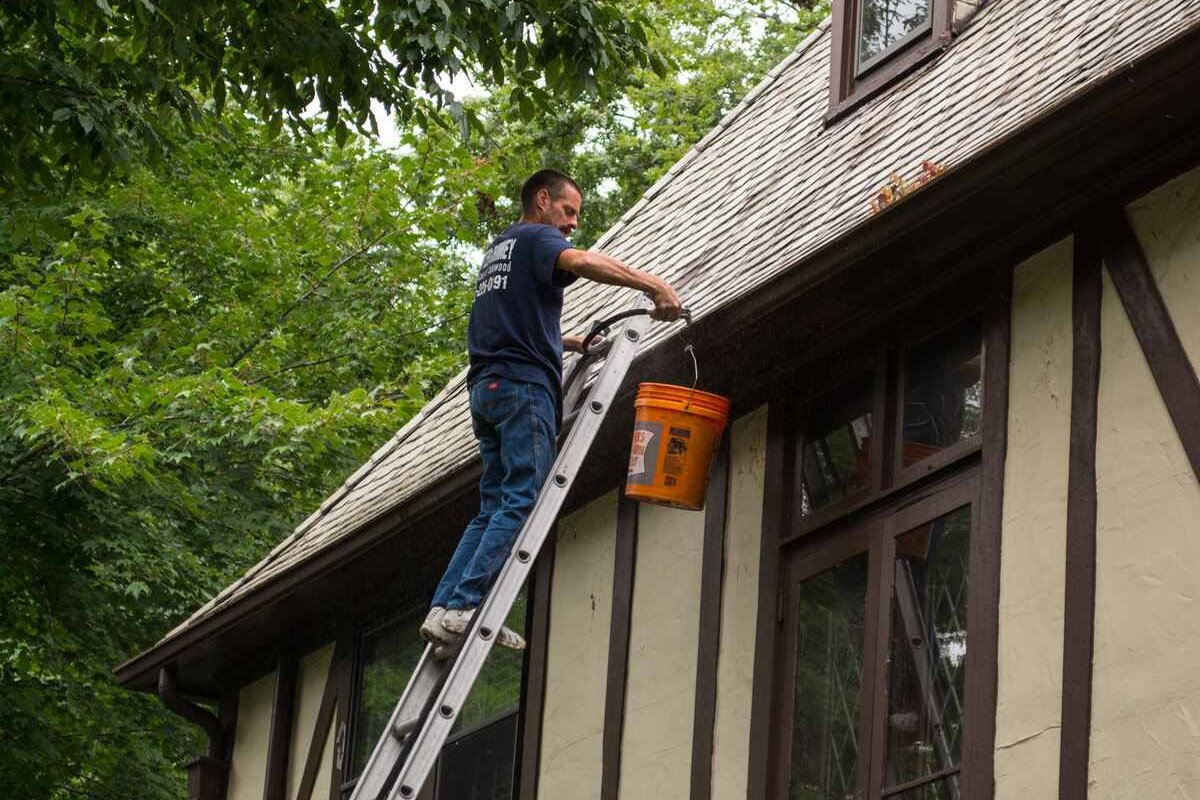
During cleaning, also inspect the system. Look for:
- Any signs of sagging or pulling away from the fascia.
- Damage to the gutter material itself (dents, cracks).
- Condition of the sealant at corners and downspout connections (check for cracking or peeling).
- Downspouts for blockages.
- Condition of the hangers and fasteners.
Addressing minor issues promptly can prevent them from becoming larger, more expensive problems. While some homeowners are comfortable cleaning their own gutters, working on ladders can be hazardous. If you are not comfortable or able to safely perform this task, consider hiring a professional gutter cleaning service.
When to Consider Seamless Gutters
Seamless gutters are an excellent choice in several scenarios:
- New Home Construction: Installing seamless gutters during the construction phase is straightforward and ensures you start with a high-performance, durable system.
- Major Renovations: If you are undertaking a significant exterior renovation, including roofing or siding, it's an ideal time to upgrade your gutter system to seamless.
- Replacing Failing Gutters: If your current gutters are old, leaking, sagging, or frequently clogging, replacing them with seamless offers a long-term solution to recurring problems.
- Improving Home Aesthetics: If you want to enhance your home's curb appeal and achieve a cleaner, more modern look, seamless gutters provide a noticeable upgrade over sectional systems.
- Seeking Reduced Maintenance: While not maintenance-free, if you want to minimize the frequency and difficulty of gutter cleaning, seamless gutters are the better option.
- Protecting Your Investment: For homeowners focused on maximizing the protection of their home's structure and foundation from water damage, the superior leak prevention of seamless gutters is a compelling reason to choose them.
Getting Started and Choosing a Professional
If you're considering seamless gutters for your home, the first step is to gather information and explore your options. Understanding the materials available and the benefits they offer is key. Next, you'll need to connect with qualified professionals who can assess your home's needs, provide an accurate estimate, fabricate the gutters on-site, and install them correctly.
Finding reliable contractors can sometimes feel daunting. You want experienced professionals who use quality materials and stand behind their work. Services exist to help connect homeowners with pre-vetted local experts, simplifying the process of finding a reputable company for your gutter installation or inspection needs.
When you're ready to install seamless gutters or need an inspection, finding qualified local contractors is key. SkyQuote connects you with pre-vetted roofing professionals who often handle gutter projects as well.
Schedule an Appointment with a Roofer
Whether you need an assessment for a potential seamless gutter installation or require immediate attention for a gutter issue like a significant leak or storm damage, connecting with a professional through a streamlined booking service can save you time and ensure you're dealing with qualified individuals.
Selecting the Right Contractor
Choosing the right professional for your seamless gutter installation is crucial for ensuring the job is done correctly and the system performs as expected. Look for contractors who:
- Have specific experience with seamless gutter fabrication and installation.
- Are licensed and insured in your area.
- Can provide references or show examples of their work.
- Offer a warranty on their materials and labor.
- Provide a detailed, written estimate outlining all costs.
- Communicate clearly and answer all your questions.
A reputable contractor will take the time to properly assess your home, discuss material options, explain the process, and ensure the system is correctly sized and pitched for optimal performance. Don't hesitate to get multiple estimates and compare not just the price, but also the scope of work, materials proposed, and the contractor's credentials.
Investing in Your Home's Future
Seamless gutters represent a significant upgrade over traditional sectional systems, offering enhanced durability, reduced maintenance, superior water management, and a cleaner aesthetic. While the initial investment is typically higher, the long-term benefits, including reduced risk of costly water damage and increased lifespan, often make them a more economical and valuable choice for homeowners. By understanding the advantages and working with qualified professionals, you can ensure your home is well-protected for years to come.
